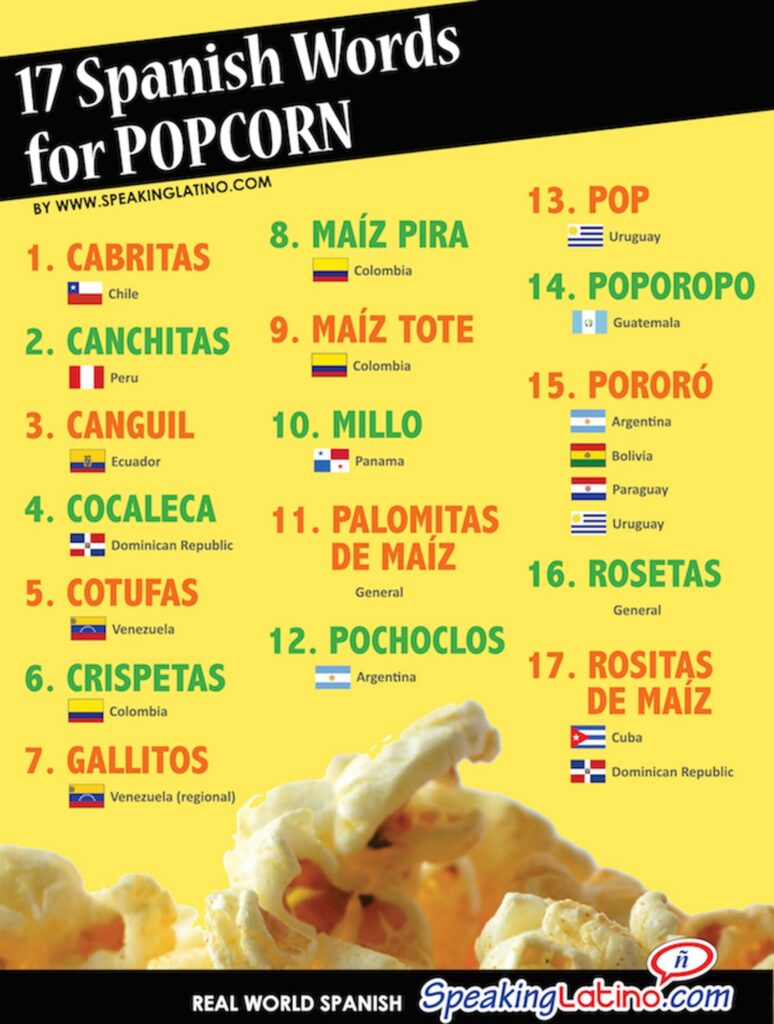
Need to translate your employee handbook but not sure where to begin? Learn everything your company should consider before translating employee handbooks or other HR documents. Plus, our best recommendations on how to start the translation process.
Legal Requirements First: Do employee handbooks need to be translated?
If you’re not sure if you need your handbook translated, here’s what we can tell you:
As an HR professional, you know that federal law plays a large part in employment agreements. One requirement is that employees must have access to HR documents in a language that they can understand. This could include the employment contract, employee handbook, company policies, pay stubs, and benefits information.
So then answer the question: Does your company hire multilingual staff? Or contractors, vendors, or partners that may have English as a Second Language? Translating employee handbooks might be crucial for you.
Additional legal language requirements may apply depending on your location, industry, subject matter, and audience. We highly recommend consulting with any compliance organizations with which your company works and asking if they have multilingual language-access requirements.
Laws aside, it’s important that documents be translated accurately for your employees. Translating documents into a reader’s native language has been shown to increase comprehension. Many HR-related documents might fly under the radar and not get translated despite the need for multilingual employment documents.
We list the types of handbooks that are commonly translated later in this article but list other HR documents that are commonly translated in the Ultimate Guide to Translation for Human Resources.
Prepare for Translating Employee Handbook: Do Your Translation Homework Before Seeking a Quote
So you’ve decided you need your employee handbook translated… now what?
If you’re considering an external translator or translation company, you need to be able to answer the following questions:
- What languages (and dialects) do you need for translation?
- How much localization is required?
- Do you need one handbook translated? Or are there other handbooks, policies, websites, and documents? (Think: does your handbook refer to a vacation policy or insubordination policy?)
- What are the file formats? Word Documents and PowerPoints? Or Adobe InDesign files with PDFs?
- Do any of those documents require Multilingual DTP or Engineering?
- Can you provide any information, such as a style guide, glossary, or translation memory, to assist with the translation?
- Will your company provide a secondary review with someone that speaks the target language?
Some of these answers might have tricky responses.
For example, say you need a handbook translated into Spanish – but which dialect? There are over 7 dialects of Spanish to choose from. A localization professional will help you pick the dialect that’s right for your audience.

This article will help you answer these questions and get you started translating your employee handbook.
You can also meet with one of our experts in managing translation projects for a complimentary localization strategy session. Interpro is happy to help and get your questions answered.
How much does it cost to translate employee handbook(s)?
This question can only be answered accurately with a quote, mainly because there are too many variables that impact the cost.
These are the biggest factors that will impact the cost of a translation:
- What’s your target language(s)?
- How many pages is your document? Is it multiple documents?
- Do you need Multilingual DTP or Engineering? (Translating images, audio, video, websites, certifications, quizzes, or eLearning courses)
- How much localization is required?
Essentially, if you need to translate a Word Document with just text and nothing else, expect lower costs and fast turnaround. Have an eLearning course with videos and images? The intricacies of the file type will cause a higher cost and longer delivery times.
This is why we recommend looping in your translators when you are writing the English version. They can help you make decisions that will make localization (and saving cash) easier when it comes time to develop the multilingual versions.
Types of Handbooks to Translate
- Administration Handbook
- Sales Handbook
- Customer Service Handbook
- Fulfillment Handbook
- HR Handbook
- Marketing Handbook
- Safety Handbook
- Maintenance Handbook
- Production Handbook
- International Student Handbook Translation
Other types of HR documents to translate:
- Employment Policies
- Employee Guidebook
- Code of Conduct
- Compensation and development
- Benefits and Perks
- Working Hours, PTO, and Vacation
- Employee Resignation and Termination
In addition to documentation, a good translation company can help you translate any training that goes along with your documents, including:
- computer-based training, tests, certifications, and surveys
- online courses or modules
- new employee orientation
What is Multilingual DTP, and do you need it for your handbook?
Multilingual Desktop Publishing (or Multilingual DTP) means the translator can also localize images and design files and not just Word documents. Translators like Interpro can translate from any file type, including InDesign, Microsoft Office Suite, PowerPoint, PDF, or any other authoring software.
So do you need Multilingual DTP for your handbook? Only if your handbook has images or graphic elements.
If a Multilingual DTP specialist is needed for your project, they will adjust:
- Text expansion and pagination. German text requires more space than English text, which could affect the layout and format. This could add or remove pages, depending on the text.
- Justification and leading. This is your basic right/left/center alignment (among your other complicated options like text on a path). And the spacing between lines to ensure legibility.
- Font and character matching and compatibility. How does your Helvetica font translate to Arabic? (Your DTP specialist will have the font, and make sure it’s not the equivalent of using Comic Sans in Arabic!)
- Right-to-Left languages. Consider languages like Arabic and Hebrew may have to have a page completely reformatted to accommodate the new alignment.
- Image and graphic localization. Sometimes this means recreating the text elements in the graphic, but sometimes it means finding or creating a brand-new graphic.
- Proofreading and quality control of the final document. A DTP specialist will ensure the translated file meets the expected digital or print specs and that you have everything you need when you want to update the document in the future.
Using native design tools to format the translated content keeps it consistent with the original file. With Multilingual DTP, you can translate:
- Images, graphic elements, and videos;
- Interactive Employee Handbooks;
- Instructor Led Training;
- Any employee educational course, including audio, video, websites, quizzes, and comprehension tests.
Multilingual DTP goes far beyond documents and handbooks. Multilingual DTP can be applied to any image or graphic anywhere, like on this multilingual website Interpro translated.
The bottom line is: if you have a graphic you need to translate, you need a translator with a Multilingual DTP specialist.
United States Language Example: Translate an Employee Handbook to Spanish
Why call out Spanish? Because this is the most commonly requested HR translation service in the United States. But it’s also a great example of how a language can have many dialects to consider in translation.
Many companies are hiring Spanish-speaking individuals for new employment talent, even for domestic companies that do not operate globally.
According to the United States Census Bureau’s 2019 American Community Survey, approximately 41.5 million people in the United States speak Spanish at home, representing around 12.6% of the total population.
When it comes to English-to-Spanish document translation, there are many different dialects of Spanish. Specifying “English to Spanish translation” isn’t enough – here are just a few of the Spanish dialects available:
- Latin American Spanish
- European Spanish (Spain)
- Mexican Spanish
- USA Spanish
- Universal/International Spanish
- Catalan (Spanish adjacent, or part of the Spanish language family. Think of how a yellow labrador is in the dog family)
- Galician (Spanish adjacent – similar to Catalan)
Speaking with a localization expert can help you pick the right Spanish dialect that will resonate with the reader.
International Language Example: Canada Requires English and French
Canada is a bilingual country with both English and French as its official languages. Businesses in Canada are required to include both French and English on any packaging and labels, and French has to be listed first.
This also applies to:
- Employment Documents
- Signage
- Customer Service
- Websites
- Interpreting Meetings and Events
(Learn about the localization differences between Canadian French and European French here.)
Find a Subject Matter Expert for Employee Handbooks
You need your translator to be a subject matter expert in three specific ways:
- An expert in the target language and culture.
- An expert in project management and how to create fast, accurate translations.
- An expert in your industry (in this case, HR handbooks, employment policies, legal contracts).
As you might imagine, federal laws and regulations require accuracy when being translated. It’s critical that your HR translator understands and can accurately translate legal terms to be understood in the target language. An accurate translation can help limit miscommunication at best and legal action, injury, or even death.
Look for an HR translator who is also a subject matter expert in employment law or has vast experience translating employment documents and policies.
For additional assurance you’re working with a qualified translator, see if the translation agency holds ISO certifications. Learn more about why ISO Certifications matter.
Ideally, your translation service should be such an expert at the language and subject matter the reader will never know the handbook was translated in the first place.
Consistent Translation of Information for Employees
It’s important to maintain consistency between translated documents. If you have reference materials from previous translations, you’ll want to provide those in addition to source files as soon as possible.
Example: If you call your employees “teammates”, you want to make sure they are called “teammates” every time, and not a mix of other terms like “employees”, “staff”, “crew members”, or “associates”.
Here are some ways to help keep a translation consistent when you translate documents:
- Write with the same jargon and references across all the English company documents, and share the jargon and references with your translator. Like in the “teammate” example, share that with your translator so you can find a word of equal meaning in the target language.
- Share your Brand Guide. Or, at the very least, use the same branding and formatting for the translated documents. Consistent branding signals are official company documents.
- Create a Glossary or Style Guide. Similar to a brand guide, but for translation. You or a company like Interpro can create these documents that outline the tone and certain specific translation preferences.
- Use one translation service that offers a Translation Memory, especially if you’re translating into multiple languages. It saves money over time and keeps your translations consistent.
Adding these steps to your translation process will help ensure an efficient and accurate translation and that all rights, responsibilities, and conditions are clear to your employees.
What is a Translation Memory?
Speaking of consistency, a translation memory (TM) can help with any translation project, especially when it comes to human resources translation services. TM is a linguistic database used by a translator to help leverage words and phrases during the translation process.
Once a word, phrase, or sentence (referred to as segments) is translated, it becomes part of the database. Translators using a translation memory tool can take advantage of the automation the tool provides, similar to using find-and-replace in Word.
Leveraging a TM allows for quicker turnaround times, increased efficiency, and consistent translations (and faster translation keeps costs down). Make sure you ask your translation service if they utilize a TM in their process.
You should also own your TM. We say should because Interpro sees your TM as our intellectual property. It is a digital asset your team hangs on to for future translations, even if you choose to use a different translator or translation company. But not all translators see it this way, so it’s good to ask the question.
Write for Localization and Multilingual Access
There is a growing need to provide access to information in multiple languages. And there’s no better place to begin than with the employee handbook.
Localization is key when performing HR translation for global companies—but what is it? While translation uses the same words in another language, localization adapts the content for a culture or region. The translation is just one part of the localization process.
A skilled HR translation service will tailor the translation to the target cultural audience.
To localize your multilingual handbook, do two things:
- Provide information to your translator on the reader’s demographics and how much localization you’ll need (the translator should also be able to provide consultative advice on this as well).
- Write your English text in a way that is easy to translate. (See articles linked below.)
How do you translate a document professionally?
For the most professional, consistent translations, we recommend using a professional translation agency with ISO Certifications, quality analysis processes, and historical proof of delivering consistent, accurate translations.
We recommend checking out these three additional resources for professional translation:
- 8 Tips When Writing for a Multilingual Audience – Tips on how to write your English sources so they translate easily with less hassle to you.
- Schedule a Complimentary Localization Strategy Session and get started with an Interpro a localization specialist today.
Get a Professional Translation Service for Your Human Resource Materials
Interpro has an expert team of translators, DTP specialists, and engineers to deliver accurate translations according to schedule. Our proven expertise in human resources translation services quickly delivers accurate information to support your employees.
Category: Translation
Tags: Guides, HR
Service: Document Translation
Don't forget to share this post!
Stay Updated with Interpro
Subscribe to our newsletter for the latest updates and insights in translation and localization.







